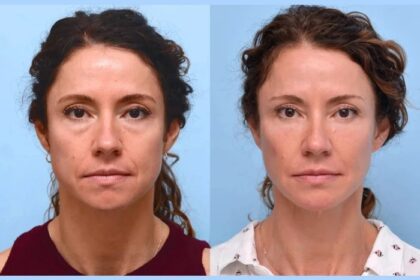In the relentless pace of critical care, where every decision can tip the scales between recovery and crisis, clinicians grapple with one of the thorniest challenges: fluid management. Too little fluid, and tissues starve from hypoperfusion; too much, and you drown the patient in edema and organ strain. Traditional static markers like central venous pressure (CVP) have long been the go-to, but they’ve proven unreliable, often leading to misguided boluses that prolong ICU stays. Enter Pulse Pressure Variation (PPV)—a dynamic, respiration-driven parameter that’s flipping the script on hemodynamic assessment. PPV doesn’t just measure; it predicts, guiding fluid therapy with precision in mechanically ventilated patients. As a game-changer, it slashes unnecessary interventions, curtails complications, and boosts survival odds. This 101 guide unpacks PPV’s fundamentals, applications, pitfalls, and frontiers, arming you with the knowledge to harness its power in the ICU and OR.
Decoding Pulse Pressure Variation: The Physiology Behind the Magic
At its heart, Pulse Pressure Variation (PPV) quantifies how arterial pulse pressure—the gap between systolic and diastolic blood pressure—fluctuates with each breath in a mechanically ventilated patient. It’s calculated simply: PPV (%) = 100 × (PP_max – PP_min) / (PP_max + PP_min)/2, where max and min are the peak and trough values over a respiratory cycle. These swings stem from the intricate dance between heart and lungs during positive pressure ventilation.
Imagine inspiration: the ventilator pumps air in, spiking intrathoracic pressure and squeezing the vena cava, which kinks venous return to the right ventricle. Preload dips, stroke volume wanes via the Frank-Starling mechanism, and pulse pressure plummets. Expiration rebounds this, restoring flow and amplifying pressure. In preload-dependent states—on the steep upslope of the cardiac function curve—these oscillations magnify, yielding a PPV >13%, signaling that a fluid bolus could hike cardiac output by 15% or more. Below 9%, you’re likely on the flat curve: fluids won’t budge output and might harm.
This isn’t theory; meta-analyses confirm PPV’s predictive punch. A 2023 review of PPV and stroke volume variation (SVV) across studies affirmed both as robust fluid responsiveness indicators, with PPV shining when physiologic caveats are heeded. Another 2024 Bayesian meta-analysis echoed this, pooling data from ventilated adults to spotlight PPV’s reliability amid common pitfalls like low tidal volumes. In critical care, where 50% of septic patients don’t respond to fluids, PPV’s ability to stratify responders from non-responders transforms reactive care into proactive mastery.
Measuring Pulse Pressure Variation: From Waveform to Wisdom
Capturing PPV demands precision, starting with prerequisites: controlled mechanical ventilation (no spontaneous breaths), sinus rhythm, and tidal volumes ≥8 mL/kg ideal body weight to fuel those pressure gradients. Deviate, and reliability craters—low tidal volumes in ARDS, for instance, mute signals.
Clinically, PPV flows from an arterial catheter linked to monitors like Edwards Lifesciences’ FloTrac or Philips’ IntelliVue, which auto-compute it from waveforms over 30-60 seconds. Non-invasive cousins, like pleth variability index from pulse oximeters, approximate but falter in shock. The gold threshold? 13% for responsiveness, per seminal guidelines, though a “grey zone” of 9-13% warrants maneuvers like passive leg raising (PLR) to clarify.
A 2025 meta-analysis on PLR-induced PPV changes nailed this: in low-tidal-volume ICU patients, a ≥2% absolute drop post-PLR predicted responsiveness with 88% sensitivity and 83% specificity. Picture a hypotensive post-op patient: baseline PPV 14% screams “bolus me,” but reassess post-500 mL to track descent below 13%, confirming euvolemia. This iterative loop—measure, intervene, remeasure—embeds PPV into protocols, curbing fluid overload that plagues 30% of ICU admissions.
Pulse Pressure Variation in the Trenches: ICU and OR Applications
Pulse Pressure Variation (PPV) thrives where chaos reigns: the ICU and operating room. In septic shock, PPV steers early goal-directed therapy, identifying the half of patients primed for fluid gains. A prospective ICU study found PPV >13% during unstable hemodynamics flagged true responders, outperforming CVP and slashing vasopressor needs. Broader meta-analyses peg PPV-guided resuscitation with shorter ventilation and fewer complications, potentially trimming mortality by 10-15%.
Intraoperatively, PPV is a sentinel for high-risk cases like major vascular surgery. Under general anesthesia’s controlled breaths, it anticipates hypotension from induction or blood loss. A 2018 review highlighted PPV’s accuracy in predicting post-fluid output surges, integrating seamlessly with enhanced recovery protocols to cut length of stay. In the OR, where applicability edges out the ICU (fewer arrhythmias, tighter control), PPV shines brighter—up to 90% reliability versus 70% in sicker units.
Beyond silos, PPV pairs with PLR for hybrid tests: elevate legs, watch PPV plummet if responsive. This non-invasive tweak extends utility to weaning or low-flow states, as a 2025 review affirmed its diagnostic edge in preload assessment. From sepsis bundles to laparoscopic upheavals, PPV isn’t a gadget—it’s a mindset shift, embedding dynamism into static routines.
The Flip Side: Limitations of Pulse Pressure Variation
No tool is flawless, and Pulse Pressure Variation (PPV) has its shadows. Spontaneous breathing? It scrambles cycles, invalidating readings in 40% of weaning trials. Arrhythmias like atrial fibrillation erase patterns, while right ventricular failure—common in pulmonary embolism—decouples lung-heart interplay, spawning false positives. Low tidal volumes (<8 mL/kg), ARDS hallmarks, blunt gradients, dropping PPV’s AUC below 0.70.
The PP-SV link isn’t ironclad either; arterial compliance and tone warp translations, per a 2025 critique questioning PPV as a stroke volume proxy. In open-chest post-cardiac surgery or abdominal hypertension, transmission fails. Meta-analyses note moderate heterogeneity (AUC ~0.87), urging context: layer PPV with lactate, echo, or mini-boluses. A 2025 trial pitting PPV against CVP in fluid guidance underscored this—PPV won, but only in ideal cohorts. Vigilance turns limits into lessons.
Pushing Boundaries: Advances in Pulse Pressure Variation
The Pulse Pressure Variation (PPV) saga evolves rapidly, especially by 2025. Non-invasive innovations, like AI-driven waveform analysis from wearables, promise bedside ubiquity without lines. For low-tidal-volume woes, tourniquet-induced preload drops supercharge PPV/SVV, per a fresh study enhancing predictions in protective ventilation.
PLR synergies deepen: 2025 meta-analyses validate absolute PPV shifts as preload beacons, even in congestion-preload hybrids. Tidal volume challenges—brief hikes to 10 mL/kg—revive signals sans risk, while end-expiratory occlusions mimic without fluids. Machine learning refines grey zones, personalizing cutoffs via comorbidities. Emerging: PPV in neurocritical care, linking high values to ischemic stroke outcomes. By decade’s end, closed-loop systems could auto-titrate based on PPV trends, heralding precision eras.
Conclusion
Pulse Pressure Variation (PPV) isn’t just a metric—it’s a revolution in critical care, demystifying fluid responsiveness where guesswork once ruled. From its physiologic pulse to ICU/OR triumphs, PPV empowers targeted therapy, dodging the pitfalls of over- and under-resuscitation. Sure, limitations lurk, but 2025’s advances—from PLR tweaks to noninvasive frontiers—illuminate paths forward. As you next face a wavering waveform, remember: PPV turns variability into victory, one breath at a time. Embrace it, and watch your patients’ trajectories soar—fewer vents, shorter stays, brighter futures. In critical care’s symphony, PPV conducts the rhythm of resilience.




